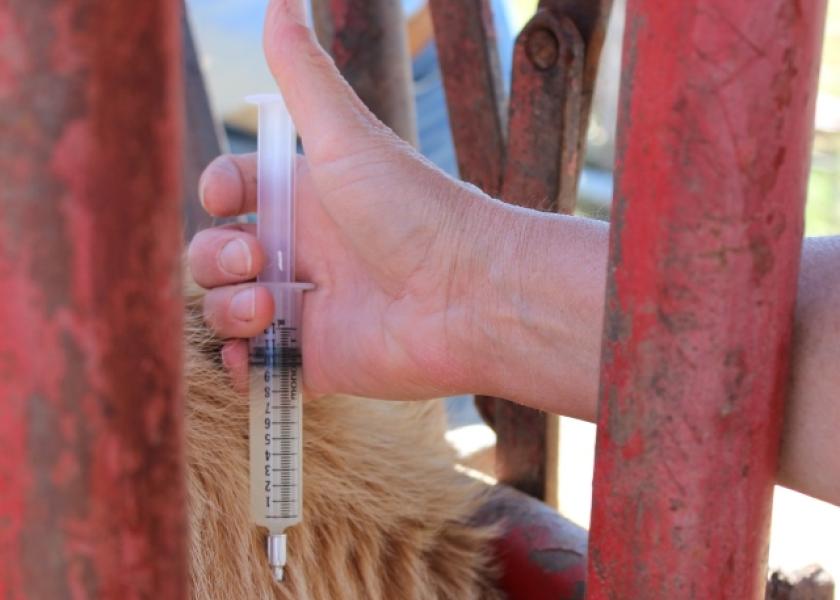What Is the Best Needle Size to Use When Working Cattle?

Does it matter what size needle I use? Is there a one-size-fits-all?
Choosing a needle isn’t quite as simple as grabbing any random one out of the vet box. Especially if your operation consists of animals of different sizes and ages, it’s important to consider several factors, say the veterinarians at Kansas State University’s Beef Cattle Institute.
Needle size has two components—diameter and length. Consider both components to appropriately match the job being done.
Needle Gauge
The diameter, or gauge, should vary depending on two factors:
• the size of the animal
• viscosity of the product
Bob Larson, DVM, shares his “go-to” needle preferences. For cows, he typically uses a 16-gauge needle, unless drawing blood or administering IV fluids, in which he might use a slightly larger diameter needle. For young calves, he prefers an 18-gauge needle. An 18-gauge needle would also be sufficient for goats, sheep and swine.
Additionally, the viscosity of the product should help determine a proper needle diameter. Logically, thicker, more viscous fluids should be administered using a larger bore needle to help the product flow faster into the animal. Alternately, most water-based products tend to be less viscous and can be used with a smaller bore needle.
Needle Length
When deciding the best length, consider administration protocols to ensure the product is administered in the proper location, such as subcutaneous or intramuscular, and the product’s efficacy is not affected.
For under the skin, or subcutaneous administration, needle length can vary based on preference.
Brad White, DVM, says skin thickness should be a determining factor of needle length, as the skin is much thinner in younger calves compared to that of an adult bovine.
Larson says 3/8” to ½” might be sufficient, while a longer needle can also be used if preferred, such as a 1.5” needle for cows and bulls and 1” for calves.
Longer needles have their time and place, though they pose a greater risk of breakage, especially when working larger numbers of cattle.
How Often Should I Change the Needle?
This can vary depending on the status of the herd. If any blood borne diseases are present, such as Anaplasmosis, Johne’s Disease or bovine leukosis virus, changing the needle with every single animal may be the most effective in preventing spread within the herd.
If there is no risk of disease spread within your herd, changing the needle every 5 to 10 animals might be more reasonable.
Burred or damaged needles should be changed immediately, as it may influence getting the product in the right spot to be effective.
More needle information and suggestions can be found in the Beef Quality Assurance manual.







